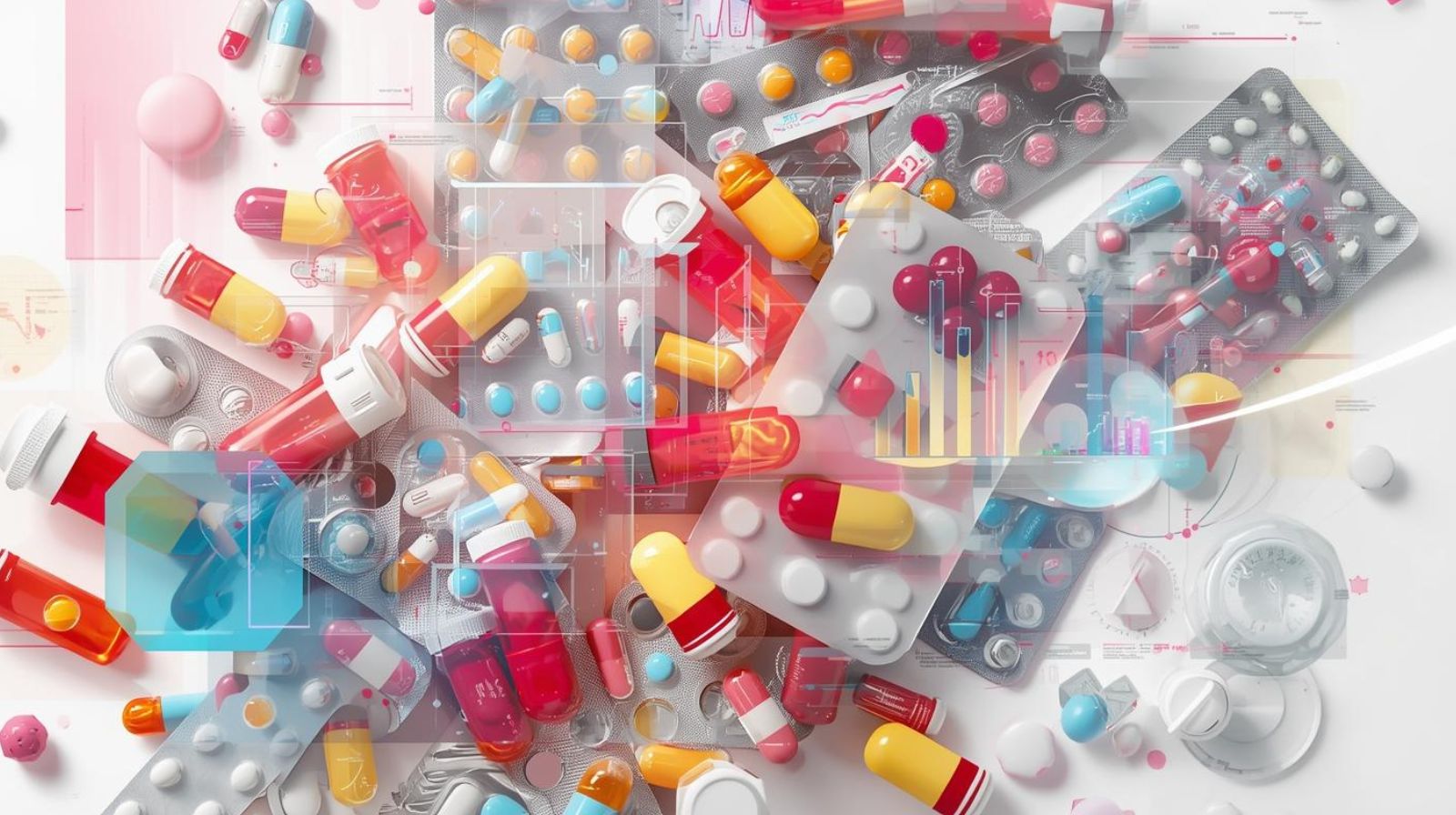- Healthy Innovations
- Posts
- 💊 AI-powered drug repurposing: The fast track to new cures
💊 AI-powered drug repurposing: The fast track to new cures
Why wait a decade to discover new drugs when thousands of proven molecules are already sitting in pharmaceutical freezers?

Welcome back to Healthy Innovations! 👋
This week, we're exploring one of the most pragmatic revolutions happening in drug discovery - and it's not about creating entirely new molecules from scratch. Instead, it's about teaching AI to find hidden therapeutic potential in drugs we've already tested, approved, and sometimes even abandoned.
The implications? Faster timelines, lower costs, and potentially life-changing treatments reaching patients years earlier than traditional development would allow.
So, let's dive in!
The opportunity hiding in plain sight
Here's the opportunity: while nine out of ten experimental drugs fail their original purpose, the traditional discovery process has generated a treasure trove of valuable data.
Pharmaceutical companies have thousands of already-tested compounds with tremendous potential waiting to be unlocked. These molecules have passed initial safety screening, generated years of research data, and in many cases were approved for one condition before new opportunities emerged.
What if AI could identify which of these "forgotten" drugs might work for entirely different diseases?
That's exactly what's happening.
AI systems are analyzing massive datasets - genomics, digital pathology, population health records, and molecular databases - to match shelved compounds with new therapeutic possibilities.
💊 Drug repurposing is the process of identifying new therapeutic uses for existing medications, leveraging their established safety profiles to accelerate development and reduce costs compared to traditional drug discovery.
Why the timing is perfect
Several factors are converging to make AI-powered drug repurposing not just possible, but increasingly practical.
First, the data revolution.
The UK Biobank recently released a multimodal dataset covering 20,000 subjects with integrated imaging and genomics data. Similar initiatives like FinnGen (genome data from over 550,000 Finns) are creating unprecedented opportunities to link genetic variations with disease outcomes. These rich datasets give AI systems the fuel they need to spot patterns human researchers would never notice.
Second, the regulatory landscape is shifting.
The FDA has been emphasizing real-world evidence frameworks that support data-driven repositioning submissions. Major funders including the NIH and Wellcome Trust increasingly encourage grant applicants to consider existing compounds and resource-efficient strategies before seeking approval for entirely new chemical entities.
Third, the economics are compelling.
Drug repurposing can shave three to four years off development timelines and cut R&D costs by 60%. For VCs and PE investors, this represents a "fast-exit" opportunity - lower capital requirements, reduced regulatory risk, and established safety data.
The global drug repurposing market was estimated between $26-30 billion in 2024 and is projected to grow at a 6-8% CAGR through 2030. Meanwhile, AI-driven discovery platforms are becoming an increasingly significant segment of this market, with rapid growth as the technology matures.

Photo by Roberto Sorin on Unsplash
Modern AI pipelines are remarkably sophisticated.
They don't just look for obvious connections between drugs and diseases - they uncover subtle, non-intuitive relationships that would take human researchers years to identify.
Graph neural networks integrate genes, pathways, patient phenotypes, and molecular structures into interconnected knowledge maps. These networks identify under-appreciated links - for instance, discovering that certain antifungals might modulate neuroinflammation, or that beta-blockers could potentially dampen cancer metastasis.
Contrastive learning models surface latent relationships by comparing how different molecules affect cellular systems. They can recognize that a drug designed for one mechanism might coincidentally influence entirely different biological pathways.
Perhaps most impressively, causal inference engines use population datasets to verify whether these AI-discovered connections actually translate to clinical benefit. By analyzing genetic proxies and real-world health outcomes across hundreds of thousands of patients, these systems can predict drug efficacy before a single new patient is enrolled in a trial.
The process moves remarkably fast.
What once took a decade can now happen in months - screening millions of drug-disease pairs, ranking the most promising candidates, and validating them through computational simulations before any wet-lab work begins.
Who's leading the charge
Several companies are at the forefront of AI-powered drug repurposing, and their progress is accelerating.
Recursion Pharmaceuticals has accumulated over 20 petabytes of cellular imaging data - one of the largest biological datasets in drug discovery. In 2024, the company expanded its partnership with Roche and Genentech to include fibrosis and oncology repurposing programs.
BenevolentAI has established major partnerships with pharmaceutical companies including Merck, focusing on oncology, neurology, and immunology targets. Many of their programs involve indication expansion of existing molecular scaffolds rather than starting from scratch.
Healx specializes in rare diseases, combining patient registry data with omics analysis through their Healnet 2.0 platform.
Insilico Medicine has extended its generative chemistry platform to systematically mine shelved compounds for age-related diseases, with several repositioned molecules entering IND-enabling studies.
Verge Genomics applies network biology and AI to identify neuroprotective candidates, including mining discontinued pharmaceutical libraries for compounds that could address neurodegenerative diseases.
These aren't just research demonstrations. Real drugs are entering clinical trials based on AI-discovered repositioning opportunities.
From lab to bedside
AI-discovered repurposing candidates are now reaching patients.
Baricitinib, originally developed for rheumatoid arthritis, became one of the most high-profile AI repurposing successes. BenevolentAI's platform analyzed biomedical data and molecular interactions to identify it as an effective inhibitor of viral entry and inflammation in COVID-19 patients.
Insilico Medicine used its PandaOmics platform to identify lifitegrast - approved for dry eye disease - as a candidate for endometriosis. Mouse studies validated reduced lesion growth, and the drug is now moving toward clinical trials for this new indication.
Healx has advanced HLX-0201 to Phase II clinical studies for Fragile X syndrome after its AI platform identified the pre-existing drug through predictive modeling of molecular mechanisms and disease correlations.
Researchers at Harvard Medical School identified tretinoin - widely used for acne - as a leading candidate for treating rare diseases, demonstrating how AI can spot non-obvious therapeutic connections.
Perhaps most intriguingly, a team used the DeepDrug AI approach to identify a combination of five approved drugs - including tofacitinib and pravastatin - that target synergistic pathways in Alzheimer's disease. This represents a new frontier: using AI not just to repurpose single drugs, but to discover novel combinations of existing medications.
The challenges that remain
Drug repurposing isn't without obstacles, of course.
Data bias is a significant concern. Large biobanks still over-represent European ancestry populations, potentially missing efficacy signals in more diverse groups. Initiatives like the NIH's All of Us dataset and H3Africa cohorts are working to address this gap.
Intellectual property gets complicated with older molecules. Composition-of-matter patents have often expired, forcing companies to rely on formulation innovations, delivery mechanisms, or orphan drug exclusivity to maintain competitive advantages.
Clinical validation still requires investment, even after AI screening. Repurposed drugs fail about 30% of the time in Phase III trials.
Regulatory frameworks around "label expansion" versus "new indication" continue to evolve. The FDA and EMA are working to harmonize guidance for repurposed drugs, though formal frameworks are still developing.
What's next
Several transformative developments are expected by 2028.
Regulatory frameworks may increasingly incorporate validated real-world evidence to shorten approval pathways for repurposed molecules. Longitudinal electronic health record data combined with genomics could generate supportive evidence alongside traditional clinical trials.
Pharma companies will increasingly spin out "legacy asset" programs, partnering with AI platforms on success-fee models to monetize dormant compound libraries without dedicating full internal resources.
Foundation models for chemistry will merge structure-based generation with phenotypic screening, creating closed-loop systems that repurpose, redesign, and validate compounds in continuous cycles.
The convergence of AI and drug repurposing represents more than an incremental improvement in pharmaceutical development - it's a fundamental shift in how we think about therapeutic discovery. By treating every approved drug as a potential solution for multiple diseases, we're unlocking a massive reservoir of untapped medical value.
Smart leaders don’t write books alone.

You built your business with a team. Your book should be no different.
Author.Inc helps founders and executives turn their ideas into world-class books that build revenue, reputation, and reach.
Their team – the same people behind projects with Tim Ferriss and Codie Sanchez – knows how to turn your expertise into something that moves markets.
Schedule a complimentary 15-minute call with Author.Inc’s co-founder to map out your Book Blueprint to identify your audience, angles, and ROI.
Do this before you commit a cent, or sentence. If it’s a go, they’ll show you how to write and publish it at a world-class level.
If it’s a wait, you just avoided wasting time and money.
Innovation highlights
👁️ Eye spy your real age. Scientists have discovered your eye's tiny blood vessels can reveal how fast you're aging and your heart disease risk. By scanning retinas of 74,000 people, they found less branched vessels indicate faster aging and higher cardiovascular risk. They even identified specific proteins that could become targets for anti-aging drugs. Your eyes might soon offer a simple health check-up!
🎵 Operating room DJ vibes. A new study shows music therapy during surgery isn't just pleasant background noise - it actually reduces the amount of anesthesia needed. Patients undergoing gallbladder surgery while listening to therapeutic music required less propofol and fentanyl, woke up more smoothly, and had lower stress hormone levels. Researchers say patient-preferred music engages the nervous system even under anesthesia, potentially accelerating healing and improving recovery.
Company to watch
🏥 Since 2010, Health Union has been quietly building something remarkable: the largest first-party patient and healthcare provider dataset in the US. Their secret? Over 53 disease-specific online communities where millions of patients, caregivers, and HCPs connect daily around chronic health conditions.
But Health Union isn't just about community - they've transformed these authentic conversations into powerful data insights that pharmaceutical companies, researchers, and care teams use to improve outcomes. Their recently launched HCP Connect platform takes it further, offering healthcare providers AI-generated clinical digests and peer insights alongside patient perspectives.
With 8.3 million records and partnerships across the pharmaceutical and medical device industries, Health Union is bridging the gap between patients, providers, and life sciences - proving that genuine community engagement and cutting-edge data solutions can coexist. Their privacy-first, award-winning approach is reshaping how healthcare stakeholders connect and collaborate.
Weird and wonderful
👟 Sneakers on steroids. Remember when sneakers just... sat there on your feet? Nike's "Project Amplify" says those days are over. Welcome to the world's first powered footwear system - basically an exoskeleton for your leg, complete with a motor, drive belt, and rechargeable battery strapped to a carbon fiber shoe.
Nike compares it to e-bikes for your feet, promising to make your 5K feel like a "casual trot." One tester climbed a winding two-story ramp that felt like "taking the escalator instead of the stairs." Sounds amazing, right?
There's just one tiny problem: you can't wear them in actual races or you'll be disqualified faster than you can say "performance enhancement."
Nike plans a consumer launch "in the coming years," joining their hall of fame that includes those self-lacing Back to the Future shoes that nobody actually wears. Will powered sneakers finally be the one that sticks?
Thank you for reading the Healthy Innovations newsletter!
Keep an eye out for next week’s issue, where I will highlight the healthcare innovations you need to know about.
Have a great week!
Alison ✨




Reply